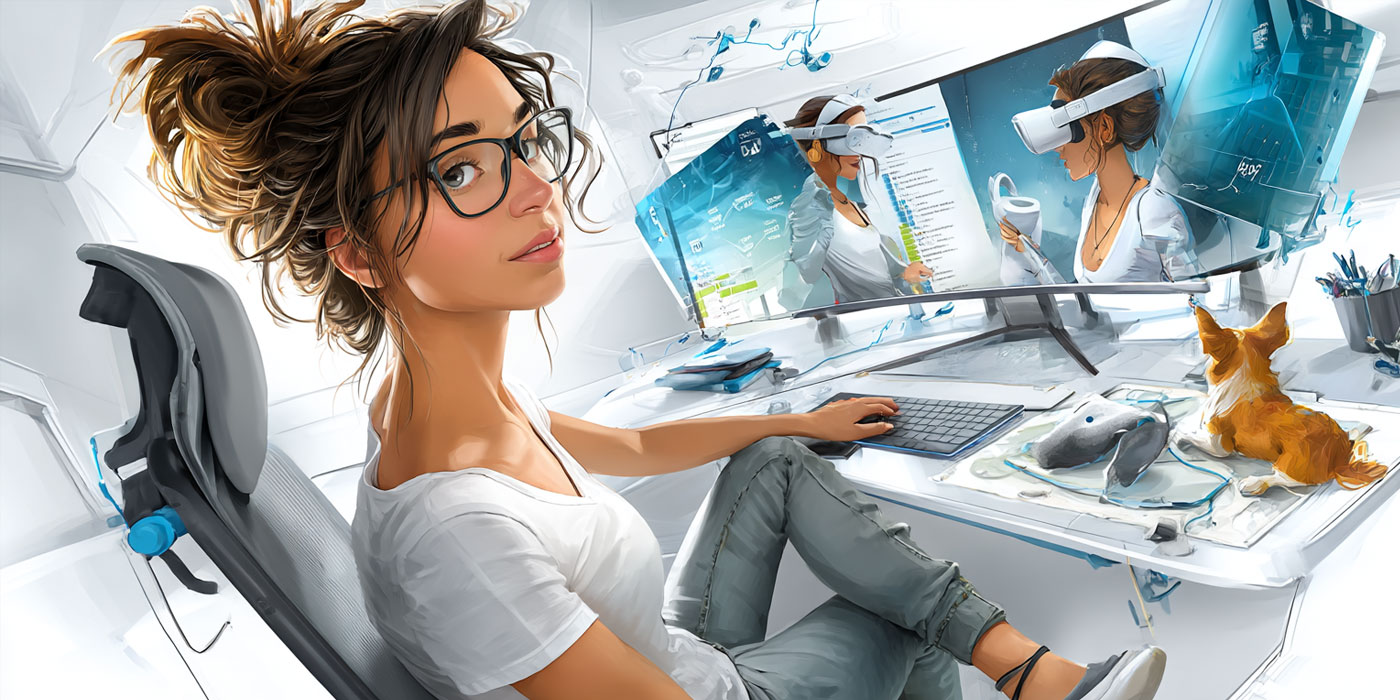XR Research Trends: Tracking the Pulse of Immersive Innovation
Breakthroughs in XR don’t happen by chance—they’re driven by deep research, bold experimentation, and a global community pushing the boundaries of what’s possible. In this category, we explore the latest trends in AR, VR, and Mixed Reality research, from academic studies and white papers to industry reports and cutting-edge prototypes. Stay ahead of the curve with insights into how XR is evolving, where it’s heading next, and what it means for businesses preparing to lead in a world of immersive technology.

Insights That Shape Tomorrow: The Latest in XR Research & Innovation.
Research Trends in XR: Exploring the Future of Immersive Technology
As Extended Reality (XR) technologies—spanning Augmented Reality (AR), Virtual Reality (VR), and Mixed Reality (MR)—continue to mature, the role of research has never been more critical. Behind every hardware breakthrough and software innovation is a vibrant ecosystem of scientists, engineers, and visionaries pushing the boundaries of what immersive technology can achieve.
This category is dedicated to tracking the latest research trends that are shaping the future of XR. We delve into the emerging discoveries, technological experiments, and academic initiatives that are paving the way for the next wave of transformative applications across industries.
Key Areas of Research in XR
Human-Computer Interaction and UX Innovations
Researchers are constantly refining how users interact with digital environments, making experiences more intuitive, accessible, and natural. Studies in areas such as gesture recognition, eye tracking, haptics, and brain-computer interfaces (BCIs) are revolutionizing how users engage with immersive content, leading to seamless interactions that blur the line between physical and digital worlds.
Advances in Display Technologies
From lighter, more powerful AR glasses to ultra-high resolution VR headsets, research in display technology is crucial to delivering richer, more comfortable immersive experiences. Innovations such as light-field displays, foveated rendering, and adaptive optics are solving major challenges like motion sickness, field-of-view limitations, and visual realism.
Spatial Computing and Environmental Awareness
Research into spatial computing—the ability of devices to understand and interact intelligently with physical space—is pushing XR devices to become contextually aware. Technologies like SLAM (Simultaneous Localization and Mapping), environmental mapping, and dynamic occlusion are enabling applications that integrate more deeply and accurately with the real world.
Artificial Intelligence and Machine Learning in XR
AI is becoming a foundational pillar in XR development. Machine learning algorithms enhance everything from environment recognition and predictive behavior modeling to automated content generation and intelligent virtual assistants. Ongoing research is making XR systems smarter, more adaptive, and increasingly capable of offering personalized, real-time experiences.
Healthcare, Education, and Industrial Applications
Research is also heavily focused on the use of XR in specific verticals. In healthcare, studies are demonstrating the effectiveness of VR-based therapy and AR-assisted surgeries. In education, immersive simulations are showing measurable gains in knowledge retention and engagement. In manufacturing and field operations, XR research is focused on enhancing worker training, maintenance, and remote troubleshooting through hands-free solutions.
Why Research Trends Matter to Business Leaders
For enterprises, understanding the direction of XR research is not merely academic—it’s a strategic advantage. Businesses that stay informed about emerging technologies are better positioned to:
- Invest early in promising platforms and solutions
- Innovate ahead of competitors by applying the latest research insights
- Adapt business models to incorporate new immersive capabilities
- Identify new markets and customer engagement opportunities
By following research trends closely, forward-thinking organizations can turn today’s experimental ideas into tomorrow’s competitive differentiators.
What You’ll Find in This Category
- Breakdowns of Major Research Papers and Projects
We translate complex academic and technical studies into accessible insights for business and technology leaders. - Emerging Technologies Watchlist
Highlighting new developments in hardware, software, AI, spatial computing, and more. - Industry Impact Forecasts
Analysis of how today’s research will impact industries such as healthcare, finance, education, retail, and manufacturing. - Expert Interviews and Thought Leadership
Perspectives from leading researchers, engineers, and innovators driving the XR industry forward.
The pace of XR innovation is only accelerating. In this category, we help you stay at the forefront of the evolving research landscape—tracking the ideas, experiments, and breakthroughs that are shaping the immersive world of tomorrow.

